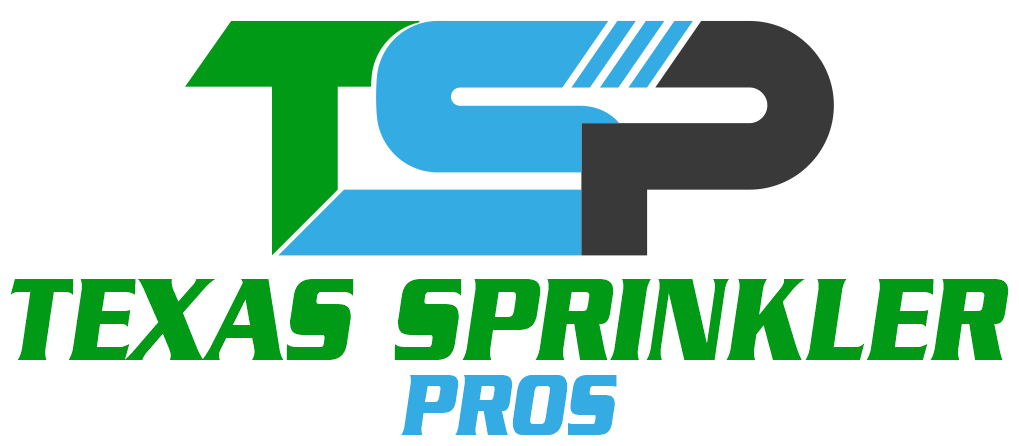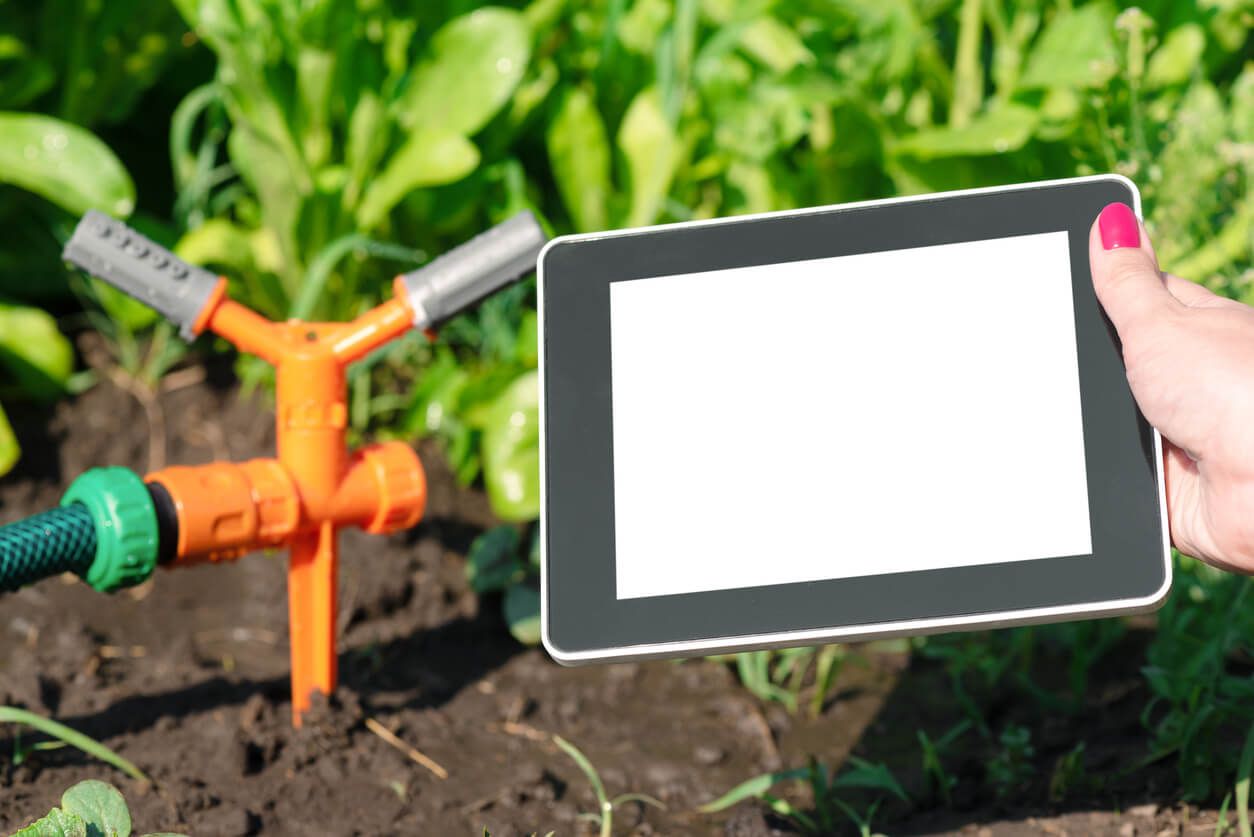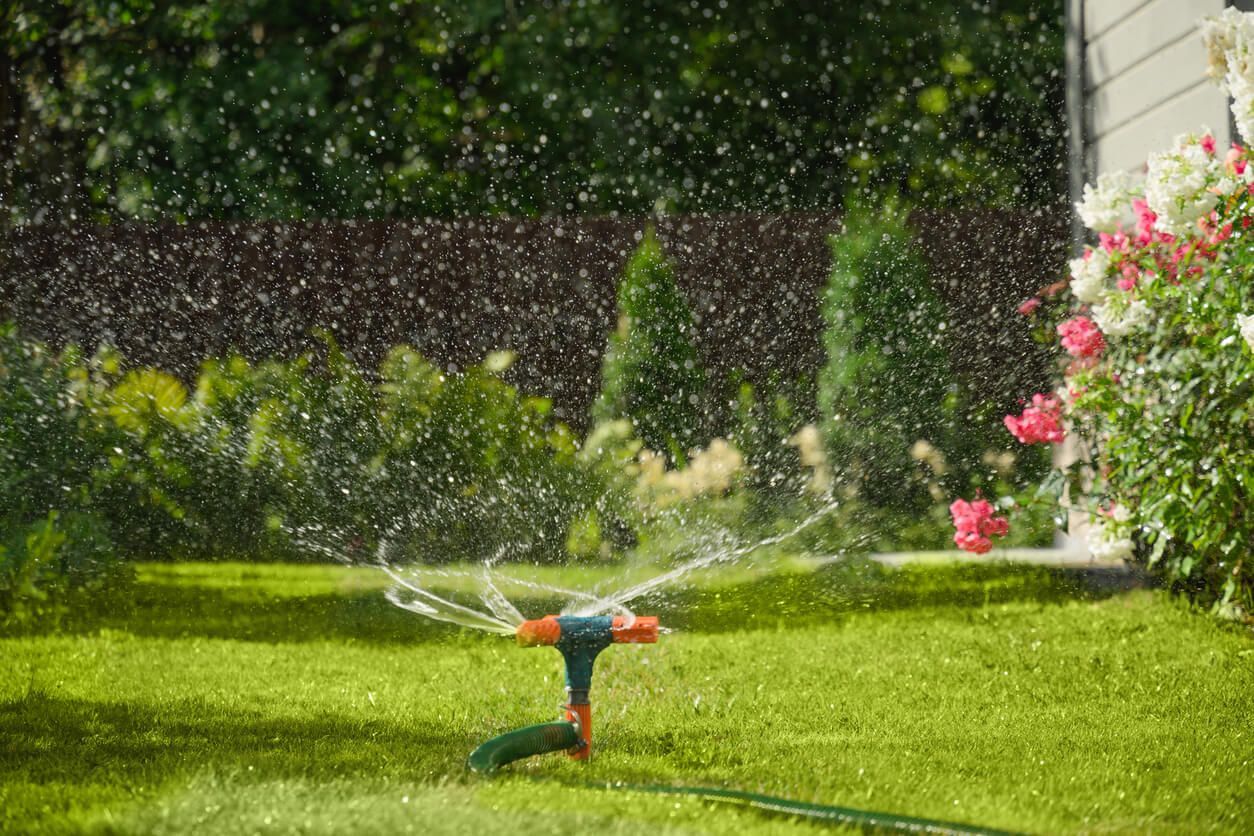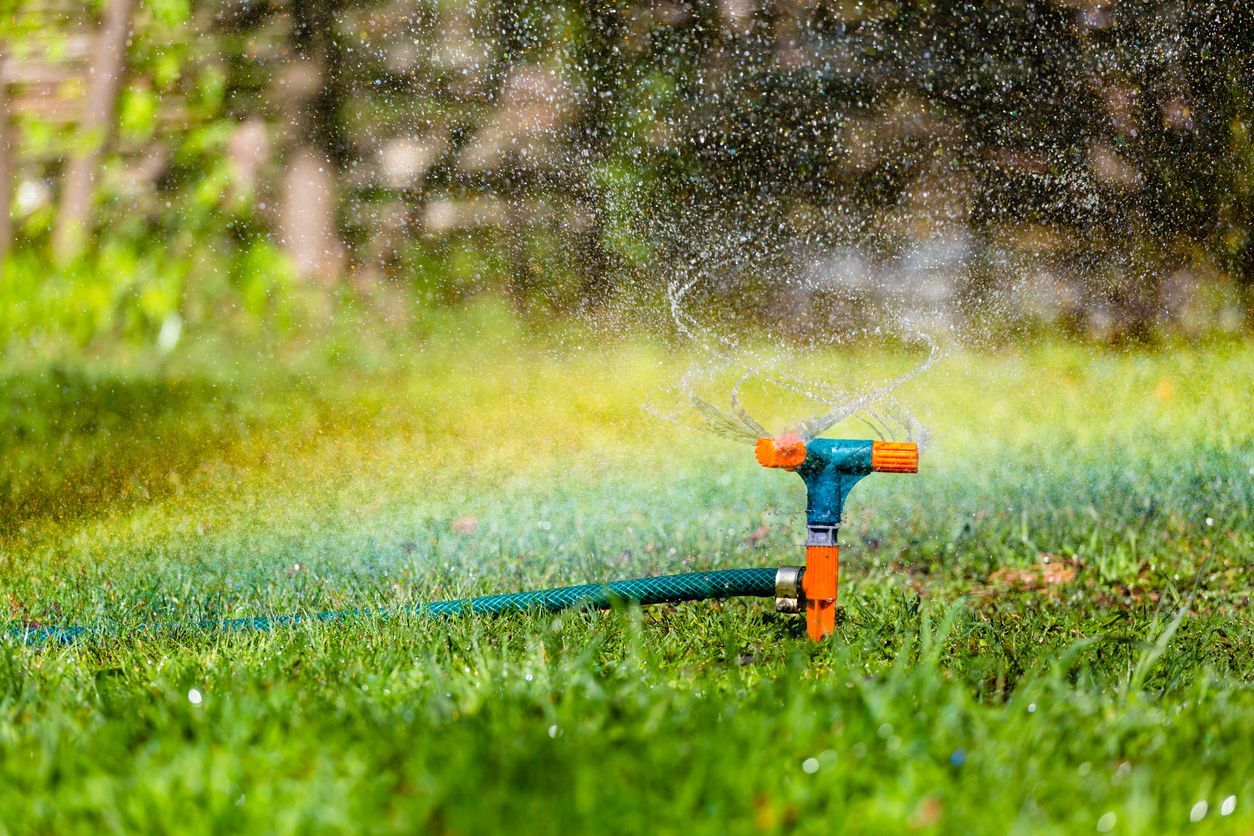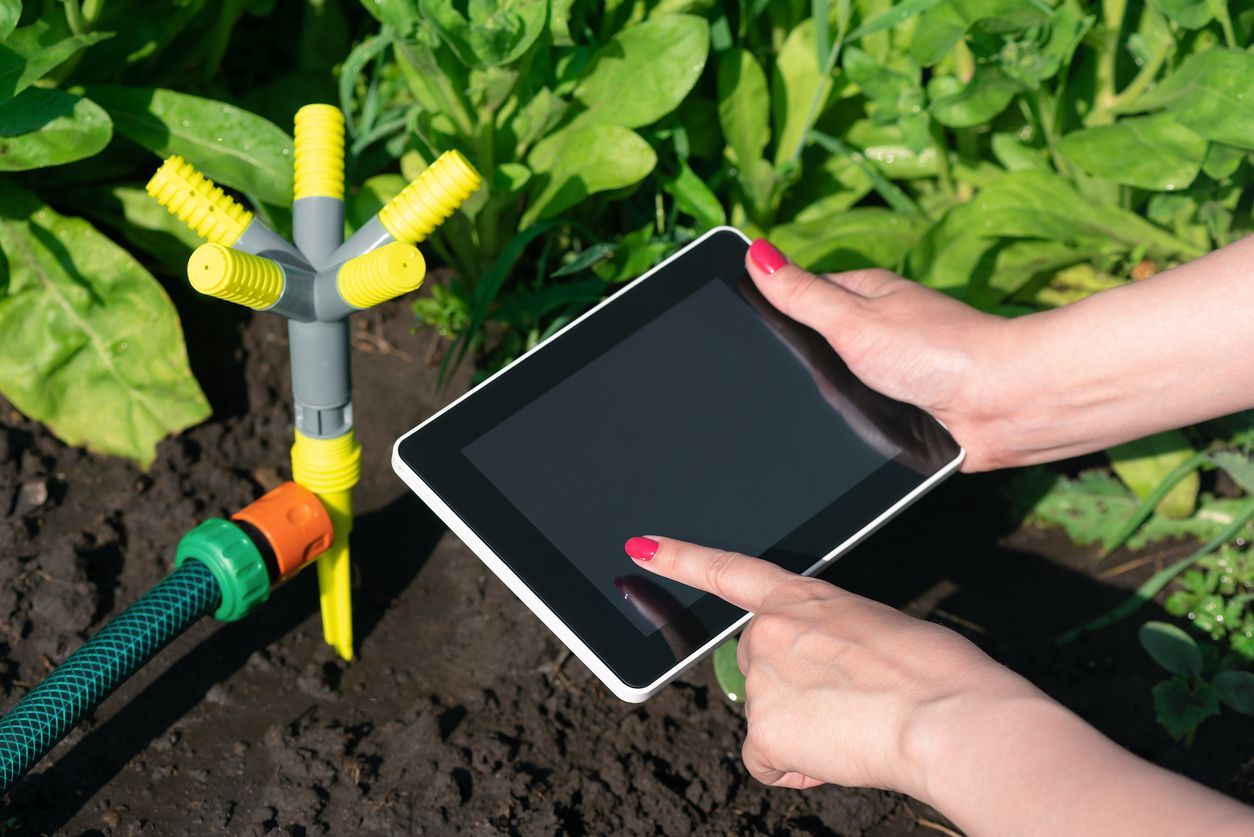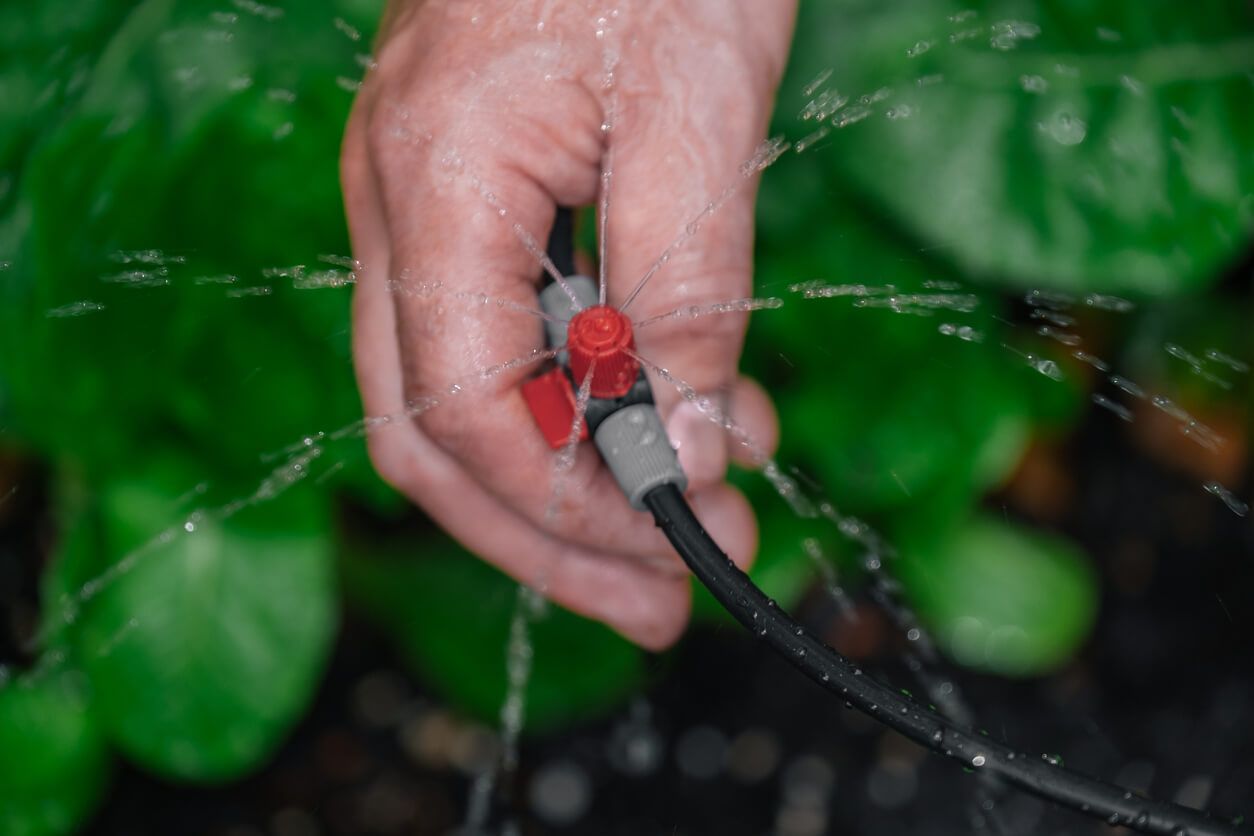Winterizing Your Sprinkler System: Protect Your Investment Before Freezing Temps
As the early days of fall approach and temperatures begin to cool, it's time to think about how to winterize your sprinkler system. Whether a professionally installed or DIY sprinkler system, making sure it is ready for the cold weather will help avoid unnecessary repairs. Leftover water remaining inside your pipes can expand as it freezes, causing extensive damage and making expensive repairs unavoidable.
Here’s how proper sprinkler winterization can protect your lawn, your wallet, and your peace of mind.
What Is Winterizing a Sprinkler
System?
Winterizing a sprinkler system means preparing your irrigation setup for the cold months to prevent damage from freezing temperatures. This involves removing all water from pipes, valves, and sprinkler heads to stop ice from expanding and causing cracks or leaks. The process typically includes shutting off the main water supply, draining water through manual or automatic valves, and using compressed air to blow out any remaining moisture.
Insulating exposed parts like pipes and backflow preventers adds extra protection against harsh weather. Proper winterization helps avoid costly repairs and ensures your system is ready for spring activation, keeping your lawn healthy year after year.
Why Sprinkler System Winterization Is Essential
Failing to winterize your sprinkler system can have detrimental consequences when temperatures drop. Here are the key reasons why this process is so important:
- Frozen Water Damage. Frozen water inside your lawn sprinkler system can cause significant damage. This includes broken sprinkler heads, burst valves, and harm to your main water supply or water meter.
- Hidden Damage Risks. Damage often goes unnoticed until spring activation. When you turn on the system, leaks or frozen pipes may appear, leading to costly repairs.
- Pressure-Related Breakage. The pressure from freezing water can break critical components overnight. This sudden damage can disrupt your irrigation system’s functionality for the entire season.
- Costly and Time-Consuming Repairs. When all is said and done, repairing costs a load of time and money to undo. Parts may take weeks to arrive. Some repairs may cost hundreds of dollars or more, impacting your budget.
- Prevention Through Proper Winterization. Proper winterization helps prevent burst pipes that cause costly damage and repairs. It keeps your system intact and ready to use when you reactivate it in early spring.
- Smooth Restart Assurance. Scheduling winterization also guarantees a smooth, problem-free restart. This preparation protects your investment and gives you peace of mind for the upcoming season.
Step-by-Step Guide to Winterizing Your Sprinkler System
Step 1: Choose the Ideal Time Frame
The ideal time to winterize is after the last regular watering but before the first hard freeze. Most pros recommend a window in late fall, though the time frame varies depending on climate, lawn size, and if you live in a region with earlier cold weather. Including this in your annual fall sprinkler maintenance keeps your protection consistent.
Step 2: Shut Down the Main Water Supply
Find your sprinkler system's main shut-off or main water supply valve and turn it off properly. This prevents new water from entering the system during freezing nights and is the first line of defense against winter damage.
Step 3: Drain All Water from the System
To prevent costly damage, you must remove all water from inside your sprinkler system:
- Manual Drain. Some systems with a manual drain valve require each zone to be drained by opening the valves at low points. Gravity helps remove water remaining from the pipes and valves, which is often sufficient for small or simpler systems.
- Automatic Drain Valve. Modern systems may include an automatic drain valve that opens when pressure drops to release water. Always check your irrigation system’s manufacturer instructions to confirm if this feature is present.
- Sprinkler System Blowout (Blowout Method). The blowout method is highly effective, especially for big yards or systems with multiple zones. It uses an air compressor to force compressed air through the sprinklers, removing any remaining water to prevent freezing damage.
Step 4: Inspect, Clean, and Maintain Components
With the system cleared of water, check every sprinkler head for clogs or debris. Clean easily accessible parts and make minor repairs if needed, such as fixing broken valves, leaking connections, or damaged pipes. Inspect the backflow preventer and check for any cracks or splits, since these issues may cause severe water leaks or pose health risks.
Step 5: Insulate and Protect Exposed Components
Wrap any above-ground pipes, external valves, or your water meter with insulating material to shield them from freezing temperatures. These components should be properly insulated to prevent freezing and potential bursting during winter. Even with the water supply shut off, extra heat from insulation can protect against harsh cold weather.
Step 6: Disconnect and Store Timers, Pumps, and Accessories
Unplug or disconnect electronic timers, pump controllers, and above-ground service pumps. Store them indoors, away from moisture and cold, to extend their functionality for upcoming seasons. It’s a pro tip that should always be part of responsible irrigation system winter prep.
Step 7: Double-Check For Remaining Water or Leaks
Walk your property and check for leaks, puddles, or soft spots in the ground—these can signal undrained water. Make any last-minute adjustments to prevent water from freezing or causing issues when you turn on your system in the spring.
Factors Affecting Winterization Cost
Several key factors influence the cost of winterizing your sprinkler system. Being aware of them can help you prepare for budgeting and choosing wisely:
- Lawn Size. The size of your lawn and the number of zones in your irrigation system greatly impact the cost. Larger lawns or systems with more zones typically require more time, labor, and materials to winterize properly.
- System Complexity. The complexity of your sprinkler system also plays a role in pricing. Systems with advanced pipes, valves, and sprinkler heads may need specialized attention or equipment, increasing the overall cost.
- Geographic Location. Your geographic location affects the extent of winterization needed. Areas with frequent freezing temperatures often require more comprehensive services to prevent costly damage from frozen pipes and valves.
- Winterization Method. The winterization method you select influences the price as well. Manual drain methods tend to be less expensive but may not be suitable for all systems, while the blowout method using compressed air offers better protection but at a higher cost.
- Costs and Fees. Labor, materials, and tools such as air compressors contribute to the total expense. Some homeowners opt to pay a flat fee for professional services, which can be a worthwhile investment to avoid expensive repairs later.
Why Hire Professional Services?
If you’re considering whether to hire a professional for winterizing your sprinkler system, here are several reasons why it’s a smart choice:
- Professional Tools for Effective Blowout. Professionals have the right tools, including heavy-duty air compressors, to perform an effective blowout method. This removes all water thoroughly and prevents freezing and costly damage.
- Early Issue Detection by Experienced Technicians. Experienced technicians can quickly identify and address potential issues in your irrigation system. This becomes a savings for avoided repairs—and significantly increases the lifespan of your system.
- Predictable Costs with Flat Fee Services. Many services offer a modest flat fee, providing predictable costs without surprise charges. This investment offers peace of mind knowing your system is properly prepared for freezing temperatures.
- Guaranteed Smooth Spring Activation. Professionals prepare your system for a smooth spring activation. Proper winterization by experts helps guarantee your irrigation system works efficiently when you need it most.
Protect Against Winter Damage: Call Texas Sprinkler Pros Today!
Winterizing your irrigation system will not only protect your lawn in the months to come, but it will also vastly reduce costly repairs down the line and ensure a working system from year to year. With careful preparation, the right tools, and, when needed, help from experienced professionals, you’ll protect your investment and enjoy a beautiful lawn every spring—without the surprise of expensive repairs.
Don’t wait until the first freeze to protect your sprinkler system, do it today!
Contact
Texas Sprinkler Pros for expert winterization services and rest easy knowing your lawn and irrigation system are in experienced hands. Our skilled technicians use professional-grade equipment and years of local expertise to deliver complete protection against winter damage.

